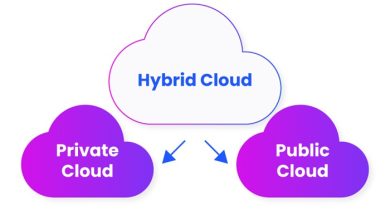
If it feels like business tools have changed more in the last three years than in the last thirty, you’re not wrong. AI has completely reshaped how businesses work, plan, and make decisions. And as the dust settles, one thing is becoming impossible to ignore: web-based financial tools are taking over.
It’s not a trend. It’s a turning point.
Businesses want speed. They want clarity. They want systems that don’t slow them down. And the old desktop-based software model just can’t keep up anymore. In the post-AI era, financial tools need to be accessible from anywhere and get smarter every day, not just when you buy a new version.
The New Expectations for Modern Financial Management
Running a business now means expecting your tools to keep pace with you. Not the other way around.
Data needs to be real-time. Reports need to update instantly. Teams need to access information without jumping through hoops. And more than anything, businesses expect their financial tools to adapt, because everything else in the world already does.
We’ve moved from “slow and steady” to “I need this right now,” and financial software has had to evolve with us.
Why Web-Based Tools Outperform Traditional Software
Here’s the truth: it’s hard for old-school software to compete.
Web-based tools update automatically, so you’re never stuck using outdated features. Security is handled in the cloud, which means constant improvements instead of occasional patches. And because everything syncs across devices, your bookkeeping is always where you are, whether you’re at your desk or checking numbers from your phone at a coffee shop.
It feels lighter. Easier. Less like “software” and more like an extension of your workflow.
And that simplicity is something business owners aren’t willing to give up anymore.
AI + Web = A New Standard for Financial Clarity
When AI is built directly into a web tool, something interesting happens: you spend less time on the boring stuff and more time actually running your business.
AI categorizes expenses automatically. It organizes transactions without you babysitting it. It highlights trends you may not notice on your own. And because it’s part of a web-based system, it learns and improves continuously.
It’s the difference between constantly cleaning up your books and having your books quietly stay organized in the background.
Who wouldn’t want that?
Tools Built for Everyone, Not Just Accountants
One of the biggest reasons web-based tools took off is that they’re simply easier to use. Modern platforms aren’t built only for CPAs; they’re built for founders, managers, marketers, and anyone else who needs quick access to the numbers. You don’t need to know accounting terminology to navigate a clean dashboard or understand a color-coded chart. You just log in and everything’s right there, organized in a way that makes sense.
And because these tools are so intuitive, teams across the company can use them without feeling intimidated. Someone in operations can check vendor payments. A marketing manager can review budget pacing. A business owner can track cash flow at a glance. People researching financial platforms often look at comparisons, like browsing a Wave vs. QuickBooks review, just to figure out which interface feels more natural to them. That’s because ease of use has become one of the biggest deciding factors, and web-based tools deliver that beautifully. And for a lot of business owners, that clarity is exactly why Wave ends up feeling like the more intuitive fit, simple, transparent, and built for people who just want their finances to make sense.
Accessibility and Collaboration in a Web-First World
One of the biggest advantages of web-based financial tools is how naturally they support collaboration.
Your accountant can jump in from wherever they’re working. Your bookkeeper can update transactions in real time. You can double-check numbers from your phone during a meeting. There’s no emailing files back and forth or wondering which version is the “real” one.
Everything is shared. Everything is current. Everything is accessible.
And for remote teams, which are now more common than ever, this isn’t just helpful. It’s essential.
The Bigger Picture: Web-Based Tools Help Businesses Grow
When your financial tools are fast, clear, and always up-to-date, decision-making becomes so much easier.
You stop wasting time digging for numbers. You stop hesitating because you’re unsure what’s accurate. You stop delaying decisions because the data feels messy. Instead, you get clearer insights, faster answers, and a smoother workflow.
Web-based tools evolve automatically, too. You don’t fall behind because they don’t fall behind. As new features roll out, you get them instantly, which means your business stays modern without extra effort.
It’s growth without friction. And that’s something every business can benefit from.
The Future of Finance Is Web Native
The shift toward web-based financial tools isn’t slowing down. If anything, it’s accelerating. AI made business expectations higher, and cloud-based tools are the only ones built to keep up.
The combination of accessibility, intelligence, and simplicity is too powerful to ignore.
So here’s something worth thinking about: Are your financial tools helping you move forward, or are they holding you in the past?
Because in the post-AI era, the future of money management will belong to the tools that stay fast, flexible, and ready for anything.




